In today’s competitive mobile landscape, optimising apps is not just a luxury; it’s a necessity for anyone looking to ensure their app stands out. The process of app optimisation involves a variety of strategies aimed at enhancing user experience, improving performance, and ultimately driving user retention. As an app developer or entrepreneur, understanding these strategies is crucial to navigating the complexities of mobile application development.
Effective app optimisation encompasses multiple facets, including:
- Performance Enhancements: Ensuring your app runs smoothly on all devices, which can significantly affect user satisfaction.
- User Experience: Focusing on intuitive design and seamless navigation to keep users engaged.
- Marketing Techniques: Employing targeted marketing strategies to reach your audience effectively and create buzz around your app.
Engaging with these optimising apps strategies not only boosts initial downloads but also fosters long-term success in the mobile market. By leveraging expert guidance, you can navigate these complexities with ease. Book A Consultation Now! and take the first step towards mastering app optimisation.
Understanding User Experience in App Optimisation

Understanding user experience is a cornerstone of app optimisation. It encompasses all aspects of the end-user’s interaction with your app, from download to daily use. A positive user experience is critical as it directly impacts user retention, satisfaction, and overall success in the crowded mobile app market.
To enhance user experience, consider the following elements:
- Intuitive Navigation: Users should be able to navigate your app seamlessly. A well-organised layout with clear menus and easy access to features can significantly improve user satisfaction.
- Responsive Design: Your app must be compatible with various device sizes and operating systems. Ensuring that your app looks and functions well on all platforms is essential for keeping users engaged.
- Loading Speed: Slow load times can frustrate users and lead to app abandonment. Optimising images, scripts, and other resources can help improve performance and retention.
- User Feedback: Actively seeking and incorporating user feedback can provide valuable insights into areas that need improvement. Regular updates based on user suggestions can enhance the overall experience.
By focusing on these aspects of user experience, developers can create a more engaging and enjoyable app. Ultimately, understanding user experience is not just about aesthetics—it’s about creating a functional, enjoyable environment that keeps users coming back.
Key Metrics for Measuring App Performance

Measuring app performance is essential for optimising apps effectively. Understanding key metrics helps developers identify strengths and weaknesses, ultimately guiding improvements. Here are some of the most critical metrics to monitor:
- Active Users: Tracking daily active users (DAU) and monthly active users (MAU) provides insight into user engagement and retention over time.
- Session Length: This metric indicates how long users spend within the app during each visit. Longer session lengths typically signify higher engagement levels.
- Churn Rate: The churn rate measures the percentage of users who stop using the app over a specific period. A high churn rate may indicate issues with user experience or value.
- Conversion Rate: For apps with monetisation strategies, tracking the conversion rate from free to paid users or in-app purchases is crucial for assessing financial performance.
- Crash Reports: Monitoring crashes and bugs allows developers to pinpoint technical issues affecting user experience. Regular analysis can help maintain app stability.
By evaluating these key metrics, developers can make informed decisions about app functionality and user experience. Regular performance reviews are vital for continuous improvement and long-term success in the competitive mobile app landscape.
Effective Marketing Techniques for Mobile Apps
To ensure your app stands out in the crowded mobile marketplace, employing effective marketing techniques is crucial. Here are some strategies to enhance visibility and user acquisition:
- App Store Optimization (ASO): Optimize your app’s title, description, and keywords to improve its ranking in app store searches. High-quality visuals and engaging screenshots can also entice users to download.
- Content Marketing: Create valuable content related to your app’s niche. Blogging, video tutorials, and social media posts can help establish your brand and drive organic traffic to your app.
- Influencer Marketing: Collaborate with influencers in your app’s industry to reach a larger audience. Their endorsements can significantly impact user trust and encourage downloads.
- Social Media Advertising: Utilize platforms like Facebook, Instagram, and Twitter for targeted ads. These platforms allow you to reach specific demographics, maximizing your ad spend.
- Email Marketing: Build an email list of potential users and keep them informed about app updates, promotions, and features. Personalizing emails can enhance engagement and encourage downloads.
By integrating these marketing techniques, you can effectively promote your mobile app, increase downloads, and foster a loyal user base. Remember, continuous evaluation of your marketing strategies will help you adapt to market changes and improve overall effectiveness.
User Acquisition Strategies for Sustained Growth

In the fast-paced world of mobile applications, having a robust user acquisition strategy is vital for achieving sustained growth. Here are several approaches to consider:
- Referral Programs: Implement referral incentives that reward users for inviting friends to download and use your app. This can create a viral effect, boosting your user base organically.
- Incentivized Downloads: Offer rewards such as in-app currency, discounts, or exclusive content for users who download your app. This can increase conversion rates and encourage more downloads.
- Targeted Advertising: Utilize data analytics to identify your target audience. Create tailored ads that speak directly to their interests and needs, increasing the likelihood of conversion.
- Partnerships: Collaborate with other apps or brands that share a similar user base. Cross-promotions can introduce your app to a wider audience and attract potential users.
- Engaging Onboarding Experience: Ensure that new users have a seamless onboarding experience. A well-designed onboarding process can significantly improve user retention and encourage them to explore your app further.
By focusing on these user acquisition strategies, you can effectively grow your app’s user base and ensure long-term success in the competitive mobile landscape. Regularly analyzing and refining these strategies will help you stay ahead of trends and user expectations.
Best Practices for Continuous App Improvement

To maintain a competitive edge in the ever-evolving mobile market, adopting the best practices for continuous app improvement is essential. Here are some effective strategies:
- Regular Updates: Consistently update your app to fix bugs, enhance performance, and add new features. This not only keeps your app relevant but also shows users that you are committed to providing a great experience.
- User Feedback: Actively seek and analyze user feedback. Implementing suggestions from your audience can lead to improvements that directly enhance user satisfaction.
- A/B Testing: Conduct A/B tests to evaluate different versions of app features or layouts. This data-driven approach helps in understanding what resonates best with your users.
- Analytics Monitoring: Utilize analytics tools to track user behavior and engagement. Understanding how users interact with your app allows for informed decisions regarding necessary improvements.
- Focus on Performance: Ensure your app runs smoothly across all devices and operating systems. Performance optimization can significantly boost user retention and satisfaction.
By implementing these best practices, you can foster an environment of continuous improvement that meets user expectations and keeps your app thriving. It’s essential to stay adaptable and responsive to changes in user needs and market trends. Book A Consultation Now! to get expert guidance on how to enhance your mobile app effectively.
